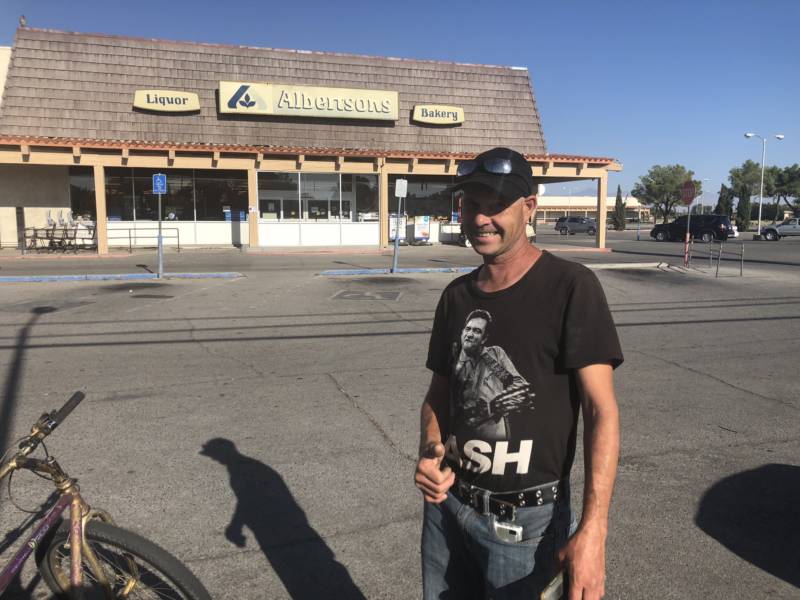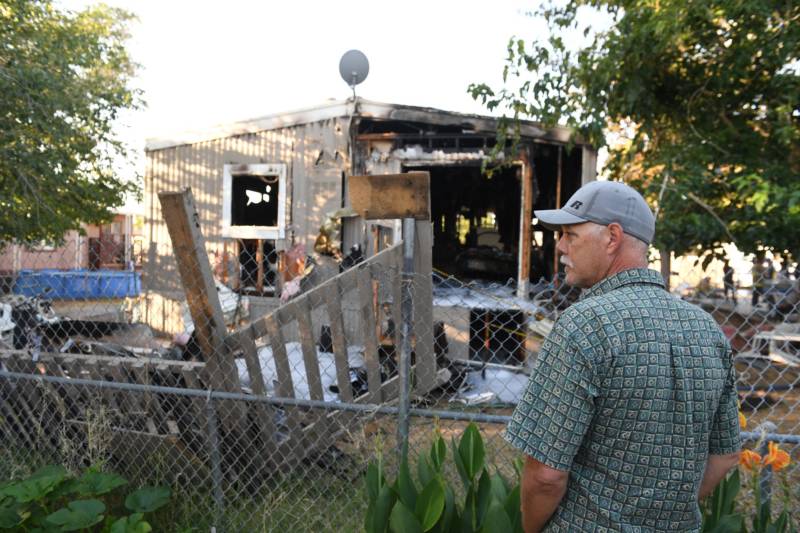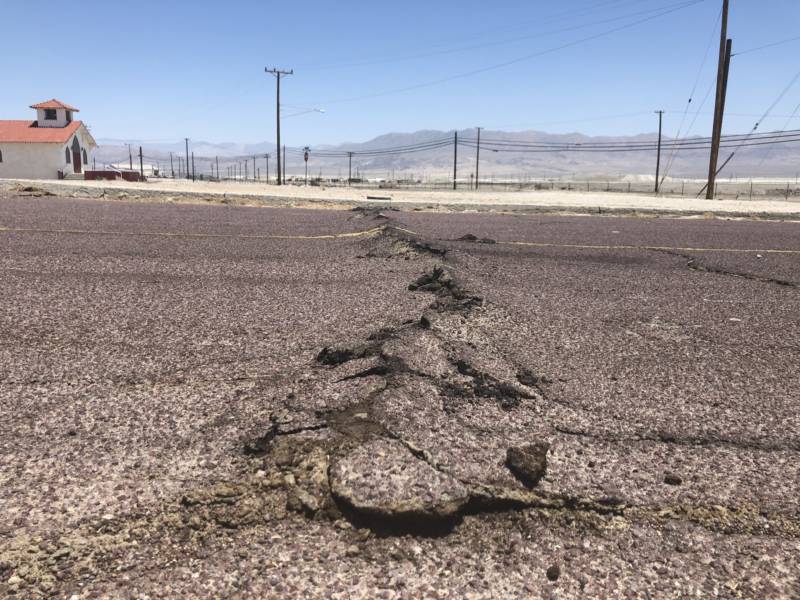Darren Cloyd was in his car when he noticed the car began to shake. He thought it was his stereo until he looked outside and saw everything swaying side to side.
“No exaggeration, it rolled for at least three to four minutes straight,” he said. It was the strongest earthquake he has ever witnessed.
Such were the stories from Ridgecrest on Saturday after Friday night’s 7.1 magnitude earthquake. Already shaken by Thursday’s 6.4 magnitude quake — now considered a foreshock — the town in the Mojave Desert was surprised by the event.
Cloyd still offered some reassurance: “We shake, rattle and roll with it. But we are built tough.”

Shannon Hilla found closed stores and damaged buildings with bricks falling off when he went out in search for a store to stock up on water on Saturday.
“They’re shaken up, rattled, probably wondering if it’s going to happen again,” he said about his community. “[They are] probably scared. I don’t see that many people.”


